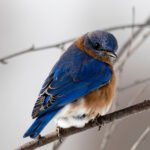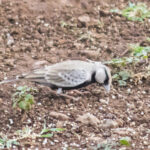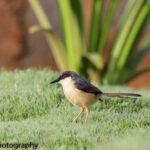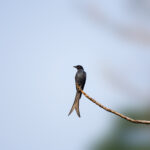Name: ALEXANDRINE PARAKEET
PSITTACULA EUPATRIA

BASIC:
Size:
53-53 cm
21-21 Inch
Primary color: green
Secondary color: pink
(Bird may have more colors)
LOCAL NAMES:
Assamese: ৰাজ ভাটৌ
Bengali: চন্দনা, বড় টিয়া
Bhojpuri: हिरामन सुग्गा, बड़का सुग्गा
Gujarati: સુરપાણનો પોપટ
Hindi: सिकंदर, पहाड़ी तोता
Kannada: ರಾಮಗಿಳಿ
Malayalam: വൻതത്ത
Marathi: पहाडी पोपट, सिकंदर
Nepali: कर्रा सुगा
Tamil: பெரிய பச்சைக்கிளி
IDENTITY:
The Alexandrine parakeet, also known as the Alexandrine parrot (Psittacula eupatria), is a medium-sized parrot with a rich history. Its name is a nod to Alexander the Great, who introduced these captivating birds from the region of Punjab to various European and Mediterranean countries. This article delves into the fascinating world of the Alexandrine parakeet.
Appearance:
Vibrant Plumage and Unique Features The Alexandrine parakeet showcases an enchanting appearance. Its predominantly green plumage is adorned with a gentle blue-grey sheen on the cheeks and nape. These features create a striking contrast to the yellow-green abdomen and the eye-catching red patch on their shoulders. Notably, the Alexandrine parakeet boasts a massive red beak with sunny yellow tips. The tail is equally captivating, transitioning from green to deep blue, culminating in a sunny yellow tip. The underside of the tail shines brilliantly in yellow, enhancing its overall allure.
Habit and Habitat:
Social Flocks and Preferred Environments In the wild, Alexandrine parakeets are social creatures, often forming flocks that traverse the skies with delicate wing-beats. Accompanying their flight is a distinctive, harsh, and loud scream. These vibrant birds thrive in deciduous forests and well-wooded areas, where their plumage adds a splash of color to the green canopy.
Diet:
A Culinary Palette The Alexandrine parakeet’s diet primarily consists of seeds, both from the ground and the surrounding vegetation. However, their culinary preferences extend to a delectable assortment of fruits and berries, offering variety and flavor to their meals.
VOICE:
Unique Calls in the Avian Symphony Within the wild avian symphony, the Alexandrine parakeet stands out with its loud, guttural “keeak” or “kee-ah” calls. These calls are deeper and more raucous compared to their close relative, the Rose-ringed parakeet (Psittacula krameri).
Fascinating Fact:
Global Feral Populations Beyond their captivating appearance and distinct calls, the Alexandrine parakeet has another intriguing facet. It has successfully established feral populations in numerous regions across the world. These regions include Spain, England, Belgium, the Netherlands, Germany, Turkey, Saudi Arabia, Bahrain, Qatar, the United Arab Emirates, Iran, Hong Kong, and Japan. In these diverse environments, they coexist with feral populations of their close relatives, the Rose-ringed parakeets.
Conclusion:
In summary, the world of the Alexandrine parakeet (Alexandrine parrot) is a vibrant and captivating one, filled with unique features and a history intertwined with human civilization. Whether soaring through their natural forest habitats or adapting to new environments in foreign lands, these birds continue to captivate bird enthusiasts and nature lovers worldwide.







Im pretty pleased to find this great site. I need to to thank you for your time for this fantastic read!! I definitely really liked every little bit of it and i also have you book-marked to check out new information in your web site.
This adaptive approach ensures that each student progresses at their own pace, reinforcing concepts they find challenging and allowing them to explore areas of interest more deeply.